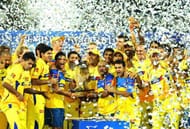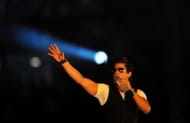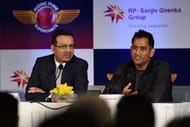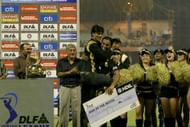Years gone by often had me drearily ogling at emptiness as the IPL tournament for that year came to a conclusion. The evenings became vacuous and the nights became darker. Of course, a two-month long absorbing cricket tournament will give you feelings of a phantom limb at its consummation.
In contrast, I managed to forgo the entire IPL tournament this year. There was no more the compulsion that made me subconsciously switch on the TV at 4 pm, nor was the urge to scratch the screen of my phone to follow the match when not at home there.
My lack of libido for IPL is not sudden. Instead, it has been a constant decline in interest that culminated in this year’s IPL, which not surprisingly also spelt the end of the broadcast of the IPL locally in Sri Lanka.
Although Virat Kohli’s silk laced licentious batting and AB de Villiers’ bohemian stroke making clubbed with The Fizz’s bazookas managed to lit up the IPL 2016 during the tail end of the tourney, the insipid beginning of the tournament and the tedious mid-part cannot be easily ignored, especially given the fact that the Big Bash League had an unprecedented success in the same year.
1) The team-nucleus that’s inconsistent
The chief reason for IPL’s flaccidity is the constantly changing teams. Since the inception of the tournament, three teams have become defunct and two are serving a suspension. Of all teams, only Kolkata Knight Riders, Mumbai Indians, Royal Challengers Bangalore, Kings XI Punjab and Delhi Daredevils have managed to survive all nine seasons, although Delhi Daredevils has already had a partial re-branding.
Chennai Super Kings was the only team that managed to sustain the nucleus of its team for a very long time, but they too have sunk into the chasm that has gobbled many a team, thus far.
Of all the teams that have managed to survive since inception, only Mumbai Indians, Kolkata Knight Riders, and Royal Challengers Bangalore have had continual captains. Kings XI Punjab saw two captains this season while Delhi’s captaincy has been switching hands regularly since the very beginning.
This constant imbibition and jettisoning of players and the teams’ administrations’ constant inability to pick a suitable leader, and the persistent change in leadership that invariably results in changes in team culture and style of play have been off-putting.
While the inter-state rivalry and regionalism help Indian fans emotionally invest themselves in a team, constantly varying teams have made the tournament’s global fans bereft of a team to support. What does IPL expect to do with a fan who vests his/her interests in a team like Kochi Tuskers Kerala only to have it terminated the following year?
2) Too much Bollywood
It is no doubt that cricket and Bollywood are two of the biggest entertainment industries in India. But given the fact that the top-notch cricketers seem to enjoy a status that is equal to that of the Bollywood stars, if not higher, why does cricket often want a piggyback ride on the back of Bollywood stars?
The opening ceremony of the IPL looked more like a Bollywood concert than a sporting ceremony. Often Bollywood stars are appointed as brand ambassadors of teams, allegedly to promote their respective teams.
In a country where cricket is revered as a religion, where cricket has infiltrated into every nook and corner of both cities and villages, it is bemusing to think that cricket needs an advertiser in the form of Bollywood. As cricketers promote various causes within India, why is there a need to promote cricket?
It also begs the question, who promotes whom in the IPL. Being a non-Indian, I would not have got to know most of these Bollywood stars, had it not been for the IPL. Is there a mutual understanding between the two industries to scratch each other’s back, each industry grows not at the expense of the other?
In the face of fans being criticised for abusing, even at times fastidiously reviled for passing a few jokes about Anushka Sharma’s affair with Virat Kohli, the Bollywood heroine, and Salman Khan found their way into the pre-match ‘analysis’ of the official broadcasters of the tournament, apparently to promote their upcoming movie venture. What did they have to offer to a cricket show?
3) The nauseating branding
If cricket losing its center stage to Bollywood is somewhat tolerable, then what is to make of team owners using their respective teams as a plaster wall to stick their ugly advertisements to promote their brands?
A team’s branding should reflect the team’s culture, the values it embodies, and the singular identities and the cultural tenets of the region that it represents. These should be reflected in the team’s name, logo, and jersey color.
The perfect example could be the team names and logos of Caribbean Premier League which evince their region’s culture. The only team in the IPL that represented its region in the branding was Kochi Tuskers Kerala that utilized the elephants of Kerala in its team branding.
However, Royal Challengers has nothing to do with Bangalore but it represents Royal Challenge, a whisky manufactured by United Spirits Ltd., the ex-chairman of which was Vijay Mallya, the owner of the IPL team.
Sunrisers Hyderabad’s ‘Sunrisers’ stems from Sun Network, the team’s owner. Rising Pune Supergiants’ lengthy odious name is the result of New Rising- lead by Sanjiv Goenka- owning the team. Similarly, Deccan Chargers was named so since Deccan Chronicle owned it.
To top everything off the gaudy, glittery jerseys splattered with a myriad of brand names are nowhere near the modern minimalistic design standards. Hardly any effort seems to have been invested in branding the teams professionally.
4) The unprofessional media production
The media production of the IPL hit an all-time low this year with eminent cricket commentator Harsha Bhogle being omitted for baffling reasons, leaving the fans to cope with the sub-par commentary the rest of the crew provides.
There also seems to be an increasing use of Hindi every year both during live and post-match interviews, and analysis. It is noteworthy that once during an Extraaa Innings episode, Krish Srikkanth retorted to Navjot Singh Sidhu questioning him whether he would comprehend him if he speaks in Tamil.
Conversations in Hindi not only affects the international viewers but since almost 59% Indians speak a language that is not Hindi, it also affects the local viewers.
The choice of hosts is also questionable since a mere perfunctory appraisal lays bare the fact that the picked hosts have no background in cricket nor sports, but are mere models who have been hired to pander the venereal senses of the viewers. If glamour is what viewers need, in the era of internet, it should be told that the viewers have more and better options than watching IPL.
The babbling of these dolled up emcees has also reached a hideous stage where discussions on the looks of cricketers have upstaged analysis of their performances. If the genders were reversed, it could have led to outrages about sexism, but since it is men who are at the receiving end, somehow it has eluded everyone’s attention.
How difficult it is, actually, to find a proper female host in a country with millions of cricket-crazy girls? Why can’t astounding female analysts like Isa Guha be vested with more broadcasting responsibilities?
5) IPL needs to find its new unique selling point
The warm reception the IPL received during its early days was because for the first time in cricket, conveniently ignoring Indian Cricket League, players from various parts of the world were bound together in different teams allowing spectators to enthrall themselves seeing foes knocking gloves and friends locking horns. But since then, cricket has seen a number of similar leagues being established and hence, the concoction of players from different countries is no more the unique selling point of IPL.
Fans also miss several international stars in the IPL with Pakistanis being the major ones, for who would not have wanted to see Mohammed Amir bowling to an in-form Virat Kohli? The teams in the IPL too have done little to reach out to international fans.
Come what may, the above shortcomings can never affect the strong presence IPL enjoys in India. But with the rise of the Big Bash League, IPL’s international value is under a significant threat. The Indian flagship tournament has its work cut out if it wants to be the premier T20 tournament in the world.
The Big Bash League brought cricket to the centre stage and promoted the game with the sport even managing to break into new frontiers like the USA. If the IPL is going to continue to be India-centric, ignoring global spectators, then it will allow the BBL to capture the imagination of the rest of the world. The rise of the Indian Super League, a football league, should not also be taken lightly, which could go onto topple IPL’s strength within India.
The IPL should relentlessly try to set the standard for other T20 leagues, raising the bar every time it surmounts it. The amount of cash that flows in clubbed with the spectator-strength of India have already made the Indian league formidable.
If the league’s administration could iron out the few glitches and genuinely attempt to enamour global fans, then the IPL has the potential to help cricket market itself to unexplored territories.
Brand-new app in a brand-new avatar! Download CricRocket for fast cricket scores, rocket flicks, super notifications and much more! 🚀☄️





